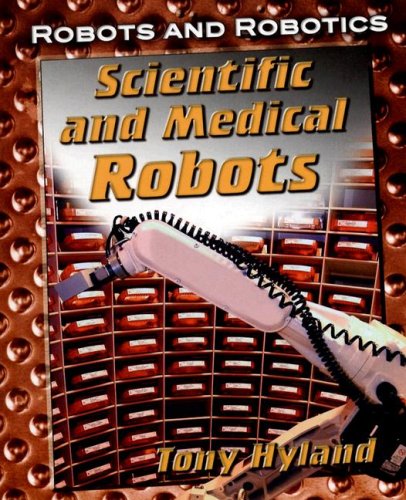-
Robots Through History
Jeri Freedman
Library Binding (Rosen Central, Jan. 15, 2011)Learn about the history of robotics, from the earliest machines of ancient Greece to modern humanoid robots used by NASA.
-
How to Build a Prize-Winning Robot
Joel Chaffee
Library Binding (Rosen Central, Jan. 15, 2011)Describes the steps to building robots in competitions, from the different types of robots to build and forming an effective building team to essential components, programming, and building safety tips.
-
The Robotics Club: Teaming Up to Build Robots
Therese M Shea
Library Binding (Rosen Central, Jan. 15, 2011)Discusses how to start a robotics club, from finding members to building a website and running a meeting, and provides such suggestions for robotics club activities as participating in robot building competitions.
-
The Robotics Club: Teaming Up to Build Robots
Therese Shea
Paperback (Rosen Central, Jan. 15, 2011)Building robots is a popular pastime for technically savvy students and budding enthusiasts. Hundreds of robotics clubs across the United States and the globe bring hobbyists together for camaraderie, support, and competitions. This guidebook helps readers start and manage their own clubs.
-
Scientific and Medical Robots
Tony Hyland
Library Binding (Smart Apple Media, Aug. 1, 2007)Through short, sharp sentences and up-close character profiles of robots, this series explores the developing world of robotics and includes hands-on activities. T
T
-
Robotics
Joel Chaffee, Jeri Freedman
Library Binding (Rosen Central, Jan. 15, 2011)Presents information about the field that covers different career paths, creation of robots for competitions, robotics clubs, and the machine's history.
-
Robotics Careers: Preparing for the Future
Simone Payment
Library Binding (Rosen Central, Jan. 15, 2011)Discover the field of robotics, and learn how to prepare for a career in the field.
-
Advanced Programming and Design
Kevin McCombs
Library Binding (Cavendish Square Publishing, Feb. 1, 2017)As students transition to higher levels of robotics, the problems they are asked to solve become more difficult. This book covers some more advanced tasks such as soldering and welding, and using CAD to design the robot ncluded are examples of how physics can be used to see if elements of the robot are strong enough to perform a task.
-
Locomotion and Mechanics
Kevin McCombs
Library Binding (Cavendish Square Publishing, Feb. 1, 2017)This book describes the physical elements, such as gears, wheels, and belts, needed for the robot to maneuver around and over objects in its environment. Included is a section on how design can affect the performance of the robot.
-
Integrated Robotics
Ian Chow-Miller
Library Binding (Cavendish Square Publishing, Jan. 1, 2017)Many students come to a class on robotics expecting to see R2-D2. This book tells students what a robot is, provides a short history of robotics, and teaches them what the parts of a robot are and how those parts work together. This book also points out pitfalls when building a simple robot and gives examples of how trouble spots were overcome.
-
Robotic Scorpion
Melissa Stewart
Hardcover (Silver Dolphin Books, Oct. 22, 2013)What do scorpions and robots have in common? Find out inside, when you go from biology to technology as you explore the worlds of scorpions and robots. For decades, scientists have looked to scorpions and other creatures for inspiration. Imagine a creature that can survive almost any environment on earth! Read the book to learn about scorpion behavior and anatomy, the design and development of robots, and what happens when scientists combine scorpions and robots. Read about scorpion-inspired robots and how they help in space exploration and other modern uses, and then build your own creepy-crawly arachnid! Robotic Scorpion is sure to inspire young scientists everywhere. S
S
-
Sensors and the Environment
Ian Chow-Miller
Library Binding (Cavendish Square Publishing, Jan. 1, 2017)Robots don't have senses, but they do have sensors that enable them to interact with their environment. This book describes the many kinds of sensors, how they work, and how to use them to get your robot to do what you want. There is also an example of the way sensors are used to get machines to perform complex tasks.